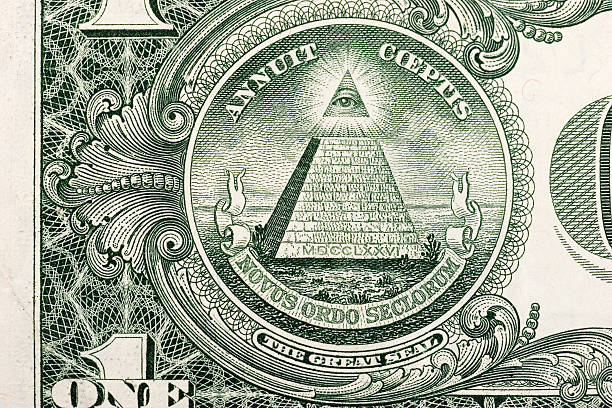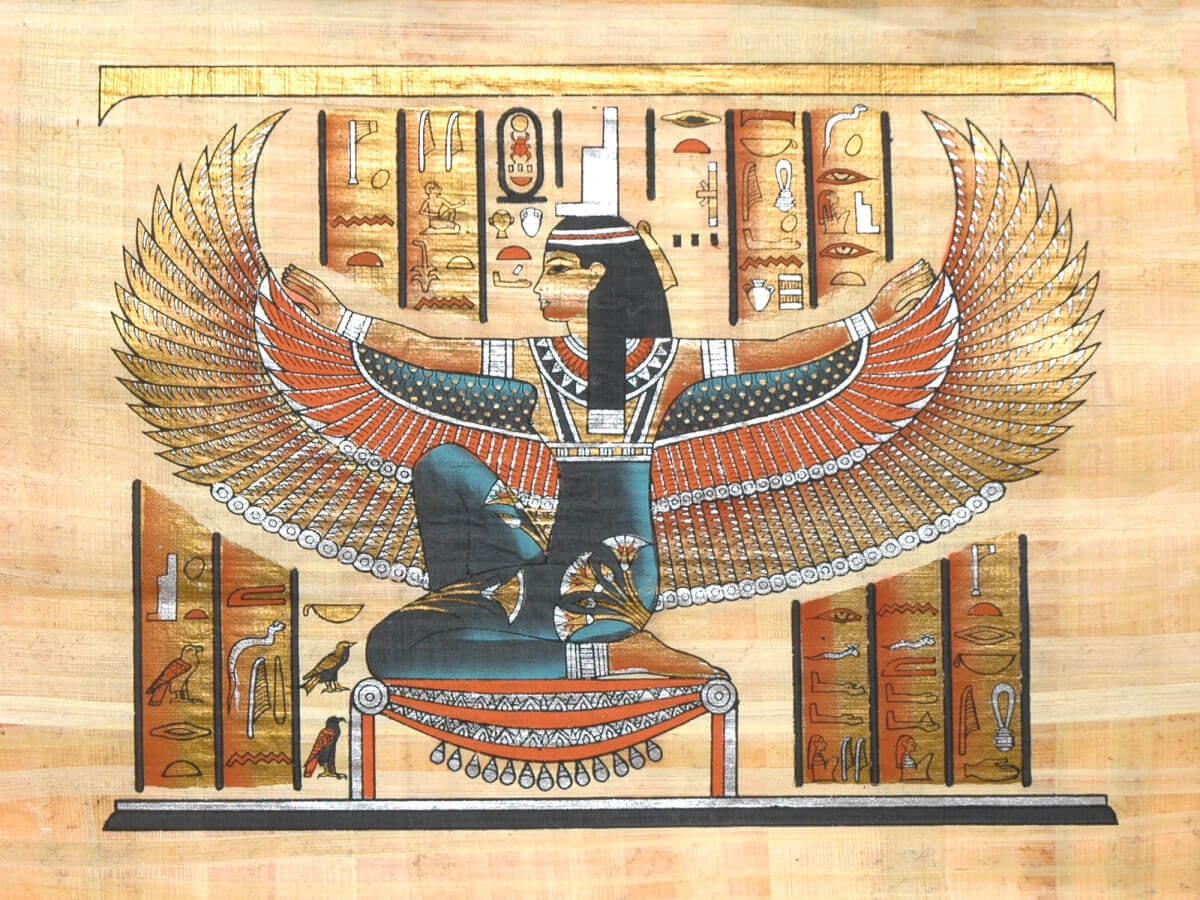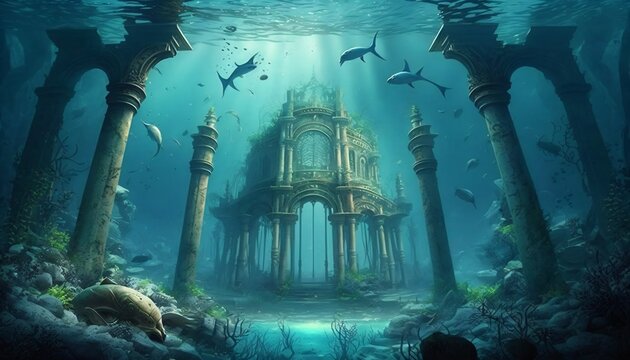
Listen to this article (19 min.)
Back in Part 1 of the “In the Shadows”, we took at look at how the earliest whispers of secret societies can be traced back to the dawn of civilization. In ancient Egypt, the priesthoods guarded the mysteries of the afterlife and the secrets of the cosmos, passing them down through generations of initiates.
In Greece, the Eleusinian Mysteries promised enlightenment and spiritual rebirth to those who underwent their sacred rituals. These early societies laid the foundation for future organizations, emphasizing exclusivity, ritual, and the pursuit of knowledge beyond the reach of the common man.
As civilization blossomed, so did the diversity of secret societies.
Medieval Guilds and Brotherhoods:
With the end of the dark ages came tremendous changes both socially and politically all around the world.The time between the fall of the Roman Empire and the beginning of the Italian Renaissance was a very interesting time in human advancement.
The world was buzzing with a new zeal for discovery, opening up a time for more concentrated study and experimentation in the arts and sciences. Which, in turn, lead to many advancements in just about all areas of life.
Specialized skilled trades were also the order of the day, and these skilled people banded together to form Guilds, protecting their trade secrets and safeguarding their economic interests. Artisans and merchants created networks along trade routes, build relationships with patrons, those who would solicit their services, and in many cases would find themselves privy to knowledge and insight in all aspects of society. Soon a method of collecting, organizing, and distributing important information was developed.
As a member of a guild one could participate in important conversations, hold positions in governance, and help make decisions for the betterment of society. Being a member of a guild meant that they had a voice at the table. These groups also guarded trade secrets and fostered a sense of community among their members. This means that much of the governing was done by committee and by an elite group behind closed doors, with the final decision being laid down by the King or head of state.
Regents were put in place to help govern the general population of a land. These Regents were the direct connection between The People and The Leadership. These Regents also had trusted advisors, most often specialists or people in positions of influence, that could help them best serve the higher-ups.
Very often the regents were the most influential and connected leaders of the above mentioned Guilds.
It isn’t surprising, then, that we can now clearly see how the previous model for secret societies was studied, passed down, and adapted to the current age, and needs of the group, guild, or committee.
As society entered into the age of enlightenment, many Guilds merged to form new, stronger, and more influential groups and created schools where they could pass on their knowledge to the next wave of skilled practitioners (initiates).
God has something to say about it!
The power of Priesthood was as strong as ever. And while the names of the Gods and Saviors may have changed, the hold they had on the hearts and imagination of the people of the time was enough to inspire the most horrific and treacherous behavior.
Many times the very knowledge that was important to one King or Emperor, for whatever reason, could very well be seen as a crime, punishable by death or many fates much worse then death, by others, namely the church.
The Church and The State were in a constant dance of domination and control. In some situations they were allies, and other times sworn enemies. Along with this, in both the church and the state, there were layers upon layers of secret orders, hidden agendas, conspiracies. As the power of The Church, in this case, the Roman Catholic Church, grew to near world domination anyone who so much a spoke anything counter to what was deemed acceptable and appropriate in the eyes of the priesthood, was considered Heresy.
Heresy was having a belief or theory that is strongly at variance, or odds, with established beliefs or customs, particularly the accepted beliefs or religious law of a religious organization. The things is… beliefs and customs were in a constant state of change, much like they are in today’s world, and the decision to change them could very well be whimsical, at best, and often vengeful and manipulative at worse.
You didn’t want to known as a Heretic. Trust me. Many a heretic have faced unimaginable demise.
Yet another reason to keep your thoughts, ideas, and knowledge hidden.
The zealots:
Brotherhoods like the Knights Templar rose to power as servants to the court or the church. In some cases, both.
As the story goes, Frenchman Hughes de Payens, in the year 1118, founded the Knights Templar with the mission of protecting Christian pilgrims on their way to and from the Holy Land during the Crusades against the Muslims. For a while, the Templars had only nine members, mostly due to their rigid rules. The knights were required to take strict vows of poverty, obedience and chastity. But by the time the Crusades came to a devastating end, the Knights Templar acquired considerable wealth and this was a cause for concern and jealousy from both The Church, and the Secular leadership.
So in 1307, King Philip IV of France and Pope Clement V plotted to arrest the grand master of The Templars, Jacques de Molay, on charges of heresy, sacrilege and Satanism. Molay and other leading Templars confessed, but only after excruciatingly painful torture. Their ends were just as brutal, as they were burned alive at the stake. Pope Clement dissolved the Templars in 1312.
Since then, the myths and legends about the Templars have grown. One held believe is that they Discovered holy relics at Temple Mount, including the Holy Grail, bodies of Giants, the Ark of the Covenant, and parts of the cross from Christ’s crucifixion. It was with the combination of religious devotion, martial prowess, elevated legal status, and the “blessings of God though The Church, that the Knights Templar rose to become incredibly powerful and influential.
Before their apparent demise, the mysterious rituals and strict code of conduct quickly elevated them to such high regard, by both the citizens and the leaders of the land. Their oath? Sworn to hold secure the secret teaching, and preserve the spiritual relics of the ancient past.
And so The Pope killed them all. (?)
The story of The Knights Templar definitely deserve an whole article specifically to them. If you would like me to write one, let me know.
Moving on…
The Renaissance and the Age of Enlightenment:
The Renaissance, an era of intellectual rediscovery, witnessed the rise of several “humanist societies”like the Florentine Academy, created to support the advancement of society with flourishing intellectual and artistic pursuits.
The Florentine Academy, also known as the Platonic Academy of Florence, was an informal discussion group that formed around Marsilio Ficino in the 15th century. Ficino was a Florentine philosopher, translator, and commentator who is largely responsible for the revival of Plato and Platonism in the Renaissance.
Ficino taught briefly at the Florentine studio, or university, and also instructed youths at the Camaldolese convent. He was tasked with producing the first complete Latin translation of Plato’s dialogues and in 1496, he published an edition of his collected Plato commentaries.
The Platonic Academy shaped the literary and artistic culture of Florence in the later Renaissance and influenced science, religion, art, and literature throughout Europe in the early modern period. Groups like The Florentine Academy were in direct linage to the guilds mentioned earlier.
In many of the early republics they were the voting and governing class of society. They had knowledge of available resources and could influence where those resources were to go.
What I would give to watch and listen to the conversations that took place at the Academy. Where the quest of finding the true, deeper meanings of life and death were discussed and theorized by some of greatest minds of that, or any other, era in time.
Some of the deeper and mystifying topics were openly discussed. Such as, what is God? What is our relationships with God? How does it express itself to us, and us to it? Are there meanings behind the seeming coincidences of mathematics and the natural world? Why does blue and red make purple? And who does number 2 work for?
Unfortunately, as seems to be quite often the case throughout history… some of these questions were just not acceptable questions to ask because the church already had already decided what the answers are. To say anything to the contrary would run the risk of being labeled a Heretic.
The Light survives in darkness…
Many of the studies and writings of this time had to be published in secret. With many turning to use of symbology and coded artifice in the arts, out of fear of the influence of The Church. Many artists, scientists, and teachers were forced to go into exile, or renounce their beliefs.
Leonardo da Vinci is one such artist. In the first edition of The Lives of the Artists, published in Florence in 1550, the artist and critic Giorgio Vasari claimed that Leonardo da Vinci was a “heretic” who did not believe in God
Thus was the fate of many a brilliant intellectual mind. Either adhere to the rigid supernatural doctrine of the religious orders or… face ridicule, be labled a heretic, be tortured, and die.
The Rosicrucian Surge and influence: America and Europe:
Getting out from under the death grip of the tyrannical leadership of The Church and the Monarchy have been one of the prime motivators in the creation of Secret Societies going all the way back through history.
The Rosicrucian’s, with their strange academical symbols and obscure texts, sought to unite art, science, and spirituality.
Take a look at some of the more famous Rosicrucian’s from over the years. You will undoubtedly immediately recognize the role they played in society, and the lasting impact they have made on “the world as a whole”.
This list includes
Isaac Newton, Blaise Pascal, Thomas Paine, Dante Alighieri, Giordano Bruno, René Descartes, Abraham Lincoln, Benjamin Franklin, Leonardo Da Vinci, George Washington, Napoleon Bonaparte, William Lloyd Garrison, Édith Piaf, Walt Disney, Victor Hugo.
There were/are thousands and thousands of members over the years, many of which we will never know the names of. You didn’t know they were Rosicrucians, it’s because… you aren’t supposed to know!
The Rosicrucian’s were connected to many other orders and organizations, such as the Freemasons, which we will talk about more in a minute. These societies provided a platform for intellectual exchange and fostered the ideals of the Enlightenment, which have lead all of humanity toward the most recent era in world affairs.
Many of the ideas presented in the constitution of the United States, and it’s Bill of Rights, stem from this time in history, and were, generally, created as a reaction to the choke hold held my the European Heads of State and the Church.
With all this in mind, it is easy to see how the promise of creating something new in the Americas seemed so alluring. Enough so that thousands of people crossed the Atlantic ocean in hopes of getting out from under the grips of the church and state.
The Freemasons:
Enter the Freemasons. National organized Freemasonry began in the early 1700’s, with the founding of the Grand Lodge in 1717. However, Freemason societies have existed for much longer. The most popular theory is that Freemasonry emerged out of the stone masonry guilds of the Middle Ages.
Freemasonry reached around the world, focusing mainly throughout Europe and into the Middle East and eventually landing on the shores of what would the United States, in direct opposition to what they faced in their homelands.
Many Freemasons saw the creation of The United States as their chance to create their ideal place to put into practice their ideas and beliefs. It is already well known that the many of The Founding Fathers of the US, the authors of the democratic constitution, were indeed Order of Freemasons members, with at least 9, but possibly as many as 22, of the signers of The Declaration of Independence being Freemasons, out of the 55 signatures in all.
The lasting influence of the Freemasons can be found in everything from art, to finance, to civic and social organizations and it can even be found on the currency of the U.S.
There are an endless resources out there if you would like to know more about the Freemasons.
Viva la’ revolution!
The Carbonari Symbol shares a few characteristics with the Freemason symbol, and the group(s) associated with it. They shared many beliefs and fought to oppose oppression and usher in a new era of political and religious freedoms. Actually, the organization know as The Carbonari ( the Charcoal Buriners) was not really an organized central union in the way that the Freemasons were. There were more of an informal network of smaller groups, active in Italy, from about 1800 to 1831.
And while The Italian Carbonari may not have lasted all that long, they indeed played a major role in inspiring other revolutionary groups, like those in France, Portugal, Spain, Brazil, Uruguay, what was the Ottoman Empire and Russia. All to a great mix of outcomes and results. Not all were as successful as the great American experiment of the Freemasons and Rosicrucian movement.
While the goals of the Carbonari movement often had a patriotic and liberal basis, they lacked a clear immediate political agenda. They were a focus for those unhappy with the repressive political situation in Italy following 1815, especially in the south of the Italian Peninsula. Members of the Carbonari, and those influenced by them, took part in important events in the process of Italian unification, especially the failed Revolution of 1820 and the further development of Itailian Nationalism. The chief purpose was to defeat tyranny and establish a constitutional government.
Other groups, such as the Adelfia and the Filadelfia, were associate organizations. And while their efforts may not have created the immediate results they had hoped for, in time, the ideas and influence won out. This is in no small part to the examples they provided for the rest of the world.
The revolutions in other parts of the world, with Russia as an example, didn’t fare so well. The Bolshevik Revolution, also known as the “Great October Socialist Revolution”, was a communist revolution that took place in Russia in 1917. The revolution was led by Vladimir Lenin, the founder of the Russian Communist Party. Leading the imprisonment and deaths of tens of millions of people.
This failed attempt, while most likely based in a desire for better lives and a more fair experience for all, ended up being one of the most bleak period of times. Not only for the people of Russia, but for much of the world. And it is still reverberating to this day.
And we are going to wrap this up with The Fenian’s
The word Fenian served as an umbrella term for the Irish Republican Brotherhood, and their affiliate in the United States, the Fenian Brotherhood. They were secret political organizations in the late 19th and early 20th centuries dedicated to the establishment of an independent Irish Republic.
The word ‘Fenian’ conjures up powerful images of dynamite plots, clandestine meetings of secret cells inching towards revolution in Ireland, from both sides of the Atlantic. Their goal, or ideal outcome, being an Irish democratic Republic, and it called for ‘the complete separation of Church and state’. The Irish Fenian’s sought independence from British control. (I mean, who didn’t?)
For this they gained the ire of the Catholic Church in Ireland. In short, there was such hostility and animosity between the church and the Fenian’s that the leadership of the church saw them as an enemy of God.
The story of the Irish revolution is a long and bloody sordid tale which eventually does see Irish independence. It is one that has played out all over the world as peoples rose up from oppression and manipulation, and believe it or now… is still happening today.
Where, you might ask? How about… EVERYWHERE! At this very moment there are secret meeting being held, important decisions being made, and they are not being made by those you think are the decision makers. In fact, just to let you know… the so called decision makers only think that they are the real decision makers… the REAL decision makers are…
We will touch more on this in the next, and final chapter in this three part series “In the shadows”.


